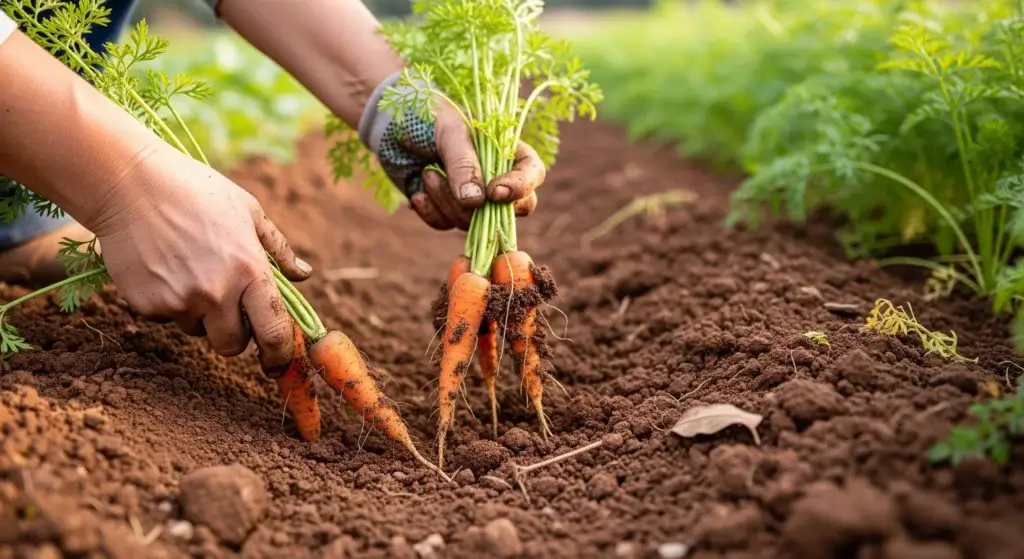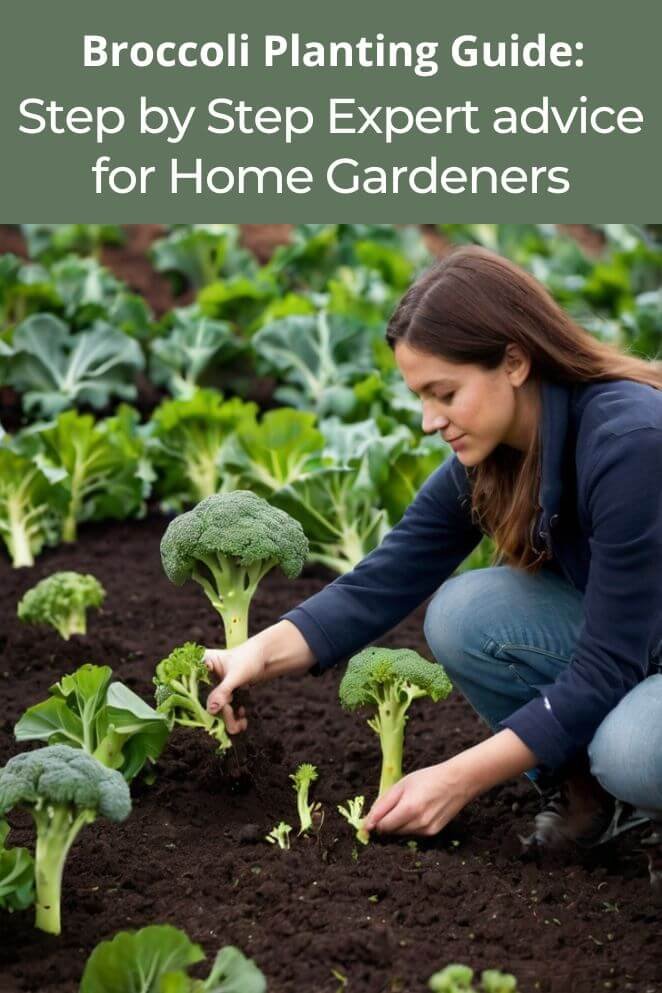
Are you eager to cultivate your own nutrient-packed broccoli? Broccoli is a highly nutritious and versatile vegetable that can thrive in a variety of garden settings.
This comprehensive guide will walk you through every step of the process, providing you with the knowledge and tips needed to cultivate healthy, bountiful broccoli plants.
From selecting the right seeds to harvesting your mature plants, we will cover everything you need to know to successfully grow this delicious vegetable in your garden.
Let’s embark on this gardening adventure together!
Characteristics of Broccoli
Broccoli is a cool-season crop that thrives best in moderate temperatures, ideally between 60-70°F (15-21°C).
Broccoli belongs to the Brassica family, which includes other popular vegetables like cabbage, cauliflower, kale, Brussels sprouts, and collard greens. Plant structure of broccoli:
- Sturdy stalk: The plant features a thick, sturdy stalk that supports its weight and allows it to stand tall.
- Dark green leaves: Broccoli produces large, dark green leaves that help in photosynthesis and provide nourishment to the plant.
- The head: The most recognizable part of the broccoli plant is the head, which is a dense cluster of immature flower buds. Heads are typically harvested before the buds open into flowers. This ensures the best flavor and texture.
Varieties of Broccoli
Calabrese broccoli
This is the most common type of broccoli, known for its large, green heads with a compact appearance.
It is often found in grocery stores and farmers’ markets due to its reliable head formation and relatively uniform maturity.
It thrives in cool temperatures between 45-75°F (7-24°C).
Calabrese matures relatively quickly, usually within 60-85 days.
- Read also: Broccoli Bonanza: Unveiling the Best Time to Plant Broccoli
- Read also: The Ultimate Guide to Growing Thriving Broccoli in Pots
Romanesco broccoli
Known for its mesmerizing appearance, Romanesco broccoli forms a visually striking fractal pattern of lime-green florets.
Its unique appearance makes it a popular choice for culinary purposes and as a decorative vegetable.
Romanesco has a slightly nuttier and more delicate flavor than traditional broccoli. Romanesco typically takes a bit longer to mature, around 75-100 days.
Sprouting broccoli
Unlike traditional single large heads, sprouting broccoli varieties produce numerous small heads (also known as florets) on long, thin stalks.
Both green and purple sprouting types are available.
Sprouting broccoli usually takes about 55-70 days to mature, depending on the specific variety.
These varieties can be harvested over an extended period, providing a continuous supply of florets.
They are particularly well-suited to small gardens where space for multiple plants may be limited.
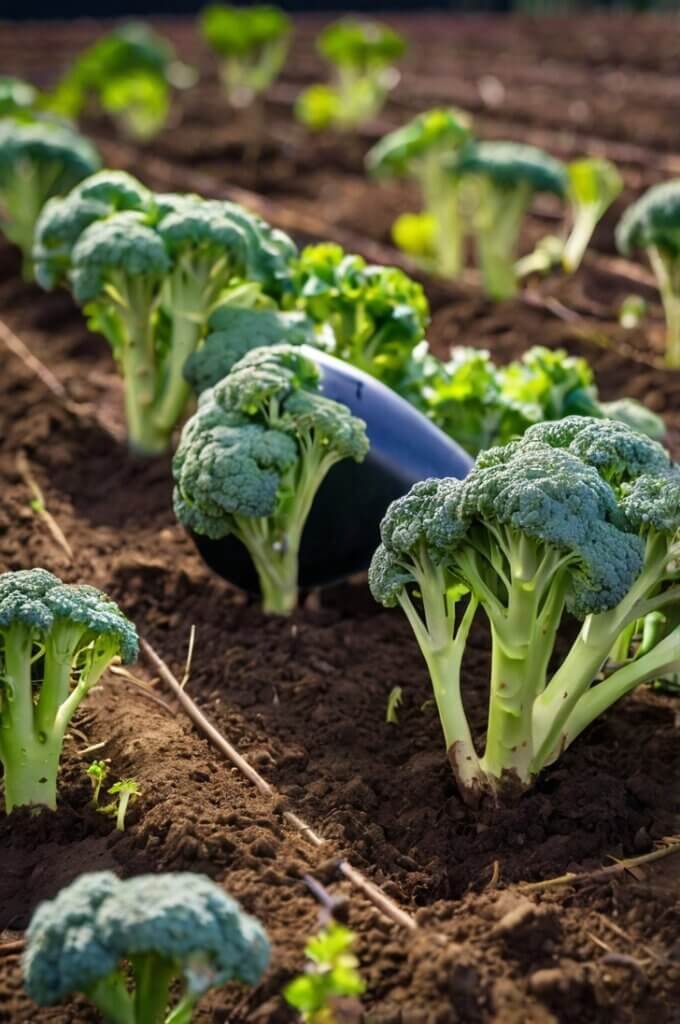
Broccoli Plant Care
Caring for broccoli plants requires some attention, but it’s manageable with the right approach.
Below are detailed tips to help you grow healthy and productive broccoli.
Soil
Broccoli grows best in well-draining soil to avoid waterlogging, which can cause root rot.
To boost soil fertility, mix in compost or well-rotted manure.
This will provide important nutrients and improve the soil structure.
Aim for a soil pH of 6.0 to 7.0. Test your soil and adjust if needed, using lime to increase the pH or sulfur to decrease it.
Watering
Keep the soil around your broccoli consistently moist but avoid making it waterlogged.
Mulching can help retain moisture and reduce how often you need to water.
Aim to provide about 1-1.5 inches of water each week.
During dry periods, increase watering to keep the plants hydrated.
Always water at the base of the plants to prevent getting the leaves wet, as wet foliage can lead to disease.
Fertilization
Before planting broccoli, use a balanced fertilizer like 10-10-10 to give it the nutrients it needs.
You can also enrich the soil naturally by adding compost.
Since broccoli requires a lot of nutrients, feeding it with a high-nitrogen fertilizer during the growing season can help it grow better.
Follow the instructions on the fertilizer package, usually applying it every 3-4 weeks.
Sunlight
Broccoli needs at least 6 hours of direct sunlight each day to grow properly.
Without enough sunlight, the plants can become tall and thin with small heads. I
n hotter areas, some afternoon shade can help prevent the plants from bolting, which is when they flower too early.
You can use shade cloth or plant broccoli near taller plants to give it some relief from the intense afternoon sun.
Temperature
Broccoli grows best in cool weather and can handle light frost, which can even improve its taste.
However, high temperatures can make broccoli bolt, so it’s important to plan your planting schedule to avoid the heat of summer.
For a spring crop, start seeds indoors 6-8 weeks before the last expected frost and move them outside 2-4 weeks before the frost date.
For a fall harvest, begin planting seeds in late summer.
If you live in an area with harsh winters, use row covers or cold frames to protect your plants and extend the growing season.

How to Plant Broccoli
Planting broccoli can be done using seeds or seedlings.
Here’s how to get started with each method:
Starting with seeds
Start seeds indoors 6-8 weeks before the last expected frost. For fall harvest, start seeds in late summer. Here are the materials you need to prepare:
- Broccoli seeds
- Seed starting trays or pots
- Seed starting mix
- Grow lights (optional)
Starting seeds indoors
Step 1: Fill seed trays
Fill seed starting trays or pots with a high-quality seed starting mix.
Step 2: Sow seeds
Plant 2-3 seeds about ¼ inch deep in each cell.
Step 3: Cover and water
Gently cover with soil and mist with water.
Step 4: Provide warmth and light
Place trays in a warm location with bright, indirect light. Use grow lights if necessary.
Step 5: Thin seedlings
Once seedlings have their second set of true leaves, thin to the strongest plant per pot.
Step 6: Transplanting seedlings
Gradually acclimate seedlings to outdoor conditions by placing them outside for increasing periods of time.
Choose a sunny location with well-drained soil rich in organic matter.
Plant seedlings in the garden, spacing them 18-24 inches apart.
Water deeply after transplanting.
Direct sowing
Step 1: Prepare soil
Choose a sunny location with well-drained soil.
Step 2: Sow seeds
Plant 2-3 seeds about ¼ inch deep, spacing them 18-24 inches apart.
Step 3: Thin seedlings
Once seedlings are a few inches tall, thin to the strongest plant.
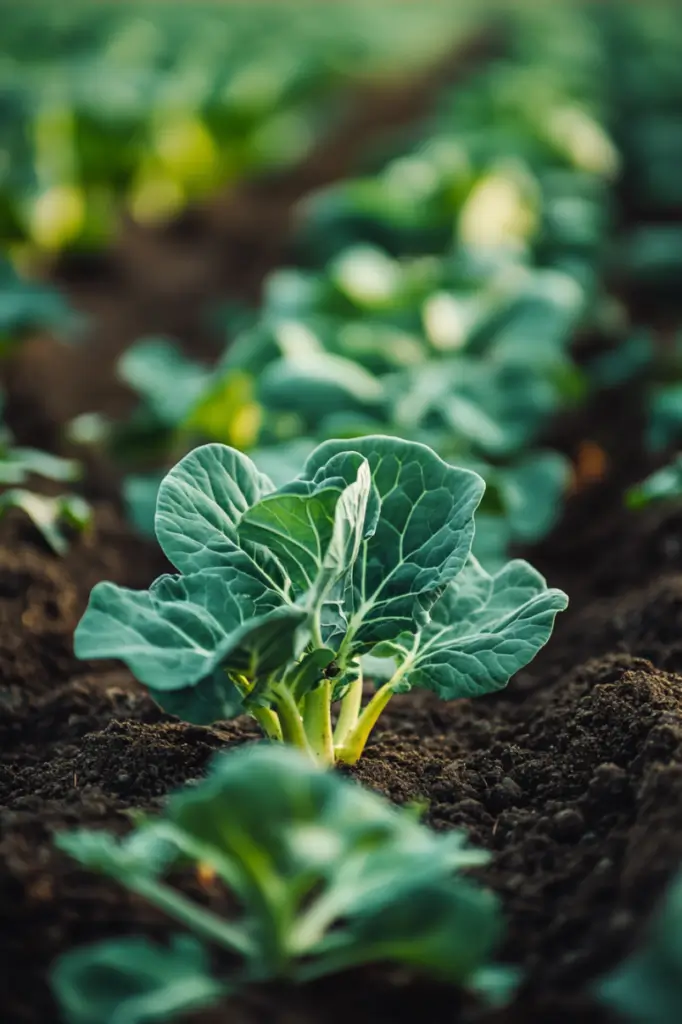
Starting with seedlings
Transplant seedlings outdoors 2-4 weeks before the last expected frost in spring or in late summer for a fall harvest.
Here are the materials for plant broccoli from seedlings:
- Broccoli seedlings
- Garden soil
- Fertilizer
- Watering can
Here are step by step planting broccoli from seedlings:
Step 1: Choose a location
Select a sunny spot in your garden with well-drained soil. Broccoli prefers soil rich in organic matter.
Step 2: Prepare the soil
Loosen the soil to a depth of about 8 inches. Incorporate compost or well-rotted manure into the soil to improve fertility.
Step 3: Spacing
Determine the spacing based on your broccoli variety. Generally, space seedlings 18-24 inches apart.
Step 4: Dig holes
Dig holes that are slightly larger than the seedling pots.
Step 5: Transplanting
Carefully remove seedlings from their pots, taking care not to disturb the root ball.
Plant the seedlings at the same depth as they were in their pots.
Step 6: Backfill
Fill in the holes with soil, gently firming it around the roots.
Step 7: Watering
Water the newly planted seedlings thoroughly.
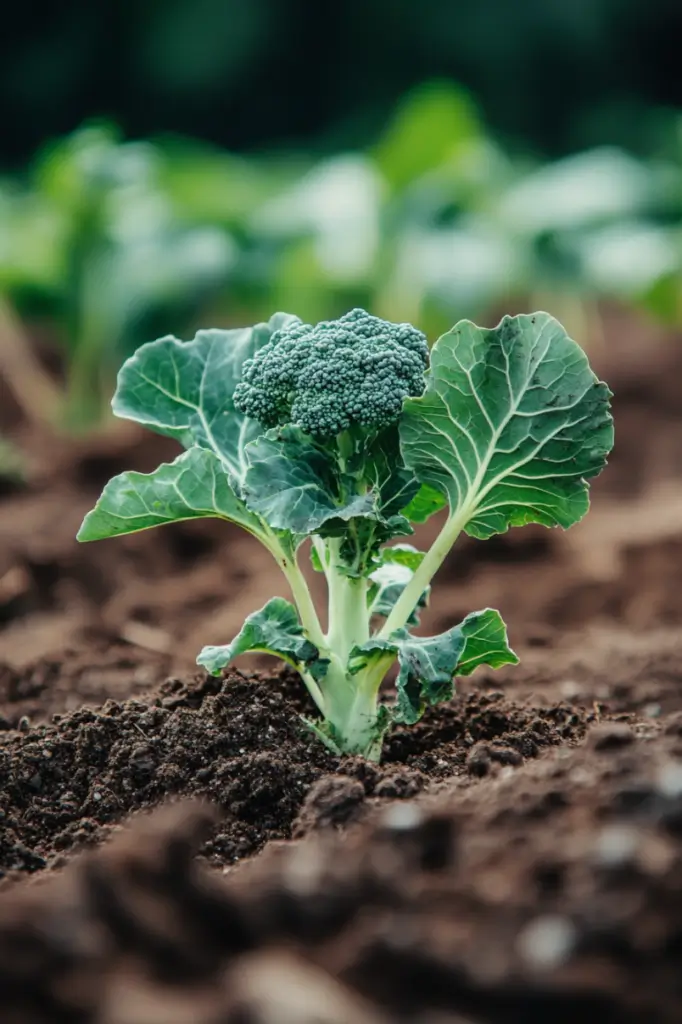
Harvesting Broccoli
Timing is the key for harvesting the best-tasting broccoli.
Harvest in the morning before the soil warms up for optimal flavor.
Harvesting the main head
The head should be firm, deep green, and compact with tightly closed buds.
Avoid harvesting when the head is yellowing or starting to flower.
Use a sharp knife or garden shears to cut the head off the plant, leaving about 2-3 inches of stem.
Leaving some stem encourages the plant to produce side shoots for a second harvest.
Harvesting side shoots
After harvesting the main head, smaller broccoli heads will start to grow from the sides of the plant.
Harvest these side shoots as they reach a suitable size, following the same method as for the main head.
You can often get multiple harvests of side shoots from a single plant.
Common Pests and Diseases
Broccoli plants are susceptible to a variety of diseases and pests that can significantly impact their growth and overall health.
Here are some common diseases and pests that broccoli plants may encounter:
Pests
Cabbage worms
- Cause: Larvae of moths and butterflies
- Symptoms: Feeding on broccoli leaves, causing serious damage.
- Control: Handpicking, using insecticides containing Bacillus thuringiensis or spinosad, and covering plants with row covers.
Aphids
- Cause: Small, soft-bodied insects
- Symptoms: Feeding on the undersides of broccoli leaves, causing discoloration and wrinkling.
- Control: Spraying water from a hose, using insecticidal soap or neem oil, and introducing natural predators like ladybugs or lacewings.
Flea beetles
- Cause: Tiny, black insects
- Symptoms: Leaving numerous small holes in the foliage, which can kill seedlings and reduce yield.
- Control: Using insecticides labeled for flea beetles and maintaining good garden hygiene

Diseases
Alternaria leaf spot
- Cause: Fungi
- Symptoms: Small, circular spots on the leaves that can merge to form larger lesions. The spots may fall out, leaving holes in the leaves.
- Spread: Through water splashing and contaminated soil.
- Control: Crop rotation, removing infected plants, and maintaining good garden hygiene.
Black rot
- Cause: Bacteria (Xanthomonas campestris pv. campestris)
- Symptoms: Yellow splotches on the margins of the leaves that grow bigger and form a v-shape. The splotches turn brown and necrotic, affecting the veins and stems.
- Spread: Through water splashing and contaminated tools.
- Control: Crop rotation, removing infected plants, and maintaining good garden hygiene.
Fusarium yellows
- Cause: Fungi (Fusarium oxysporum f. sp. conglutinans)
- Symptoms: Yellowing of the leaves and stems, which can lead to stunted growth.
- Spread: Through soil and water.
- Control: Crop rotation, using resistant varieties, and maintaining good soil health.
White blister (White rust)
- Cause: Oomycete (Albugo candida)
- Symptoms: Small, raised bumps on the stem, flowers, and leaves that rupture and release a white powder-like substance.
- Spread: Through water splashing and contaminated soil.
- Control: Crop rotation, removing infected plants, and maintaining good garden hygiene.
Clubroot
- Cause: Fungus
- Symptoms: Rapidly wilting leaves gnarled and misshapen roots, and stunted growth.
- Spread: Through soil and wind.
- Control: Crop rotation, raising soil pH, and sterilizing the soil.
Downy mildew
- Cause: Fungal-like water mold
- Symptoms: Yellowing of seedlings, pale, angular spots on the upper sides of leaves, and whitish spores on the undersides of leaves.
- Spread: Through rain, splashing water, and wind.
- Control: Crop rotation, removing infected parts, and applying fungicides.
Powdery mildew
- Cause: Moist conditions
- Symptoms: Ashy white powder on the top sides of foliage.
- Spread: Through warm, moist conditions.
- Control: Applying horticultural oils and maintaining good air circulation.
White mold/sclerotinia
- Cause: Fungal infection
- Symptoms: Water-soaked stems with brown lesions and cotton-like growth, leading to wilting and yellowing of leaves.
- Spread: Through wind and cool weather.
- Control: Destroying affected plants, removing infected soil, and using barriers to prevent infection.
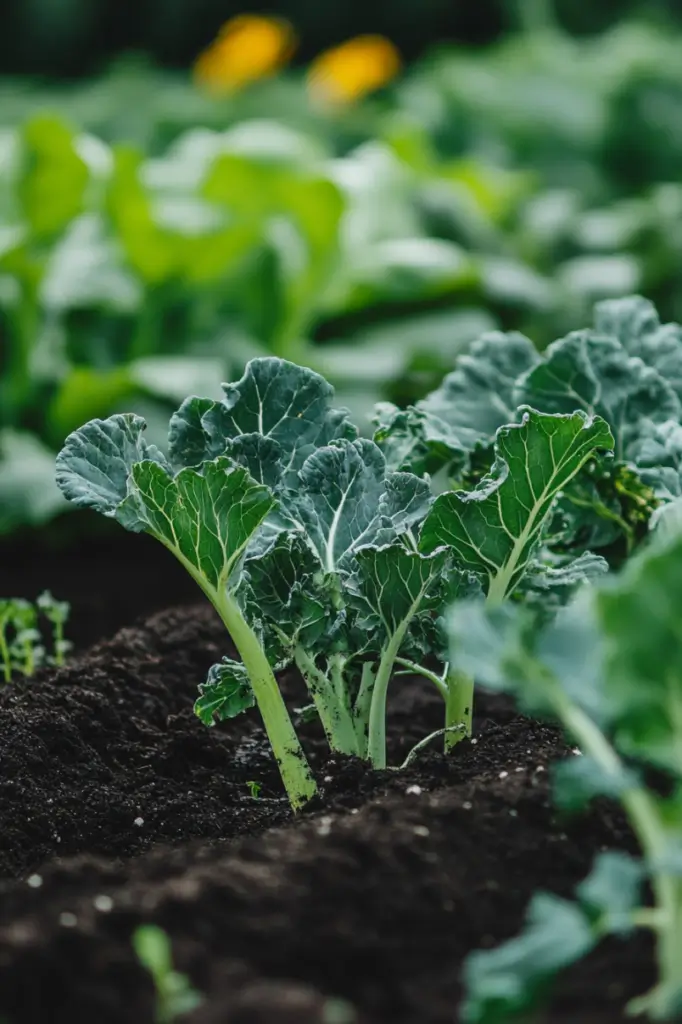
- Read also: From Seed to Supper: Mastering Organic Broccoli Care
- Read also: Broccoli Care Mistakes: Master the Art of Growing Your Broccoli
Conclusion
Growing broccoli can be a gratifying experience, offering a bounty of fresh, nutritious heads right from your garden.
With the right planting time, care, and attention to pest and disease management, you can enjoy a successful broccoli harvest.
Follow this guide to ensure you provide the best conditions for your broccoli plants to thrive.
FAQs
Yes, broccoli leaves are edible and nutritious. They can be cooked similarly to kale or collard greens.
Yes, you can grow broccoli in containers. Choose a large container with good drainage and use a well-draining potting mix. Make sure the container is at least 6-8 inches deep to accommodate the plant’s root system.
In areas with harsh winters, use row covers or cold frames to protect your plants and extend the growing season. This will help keep the plants healthy and productive for a longer period.

